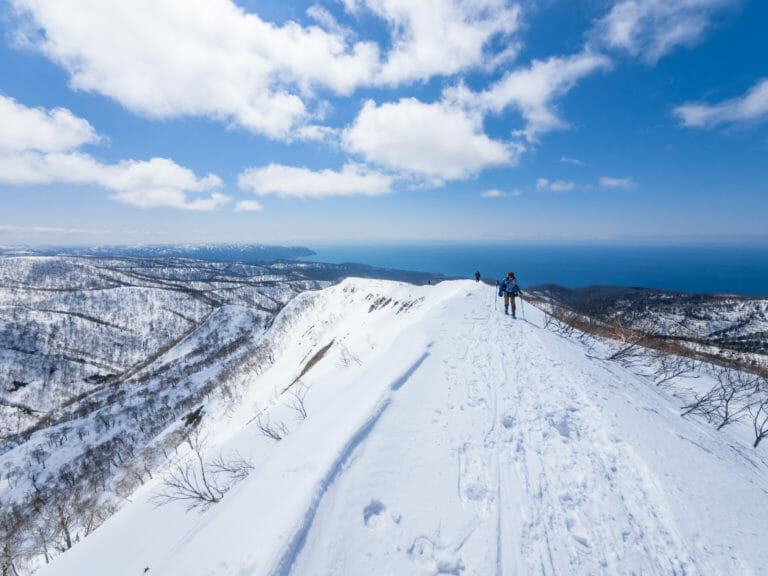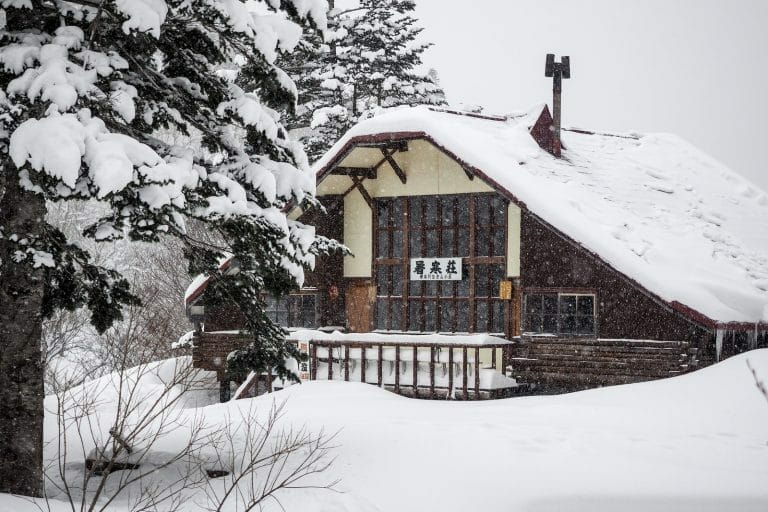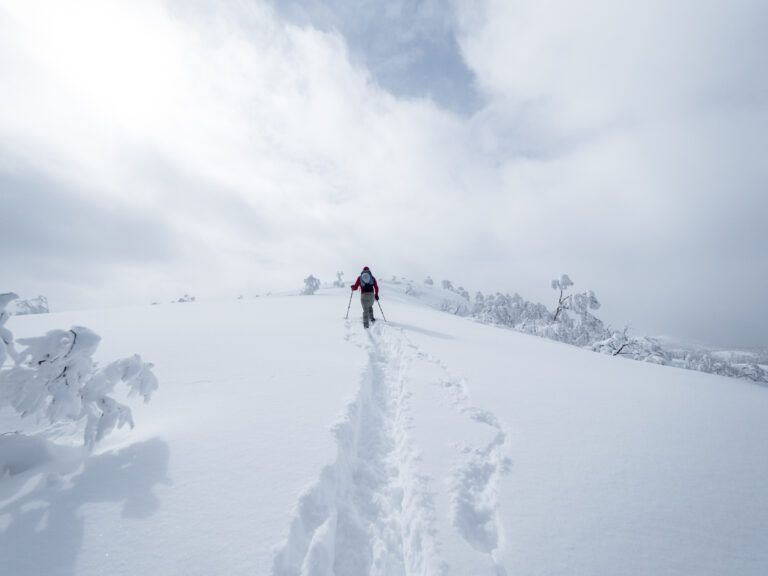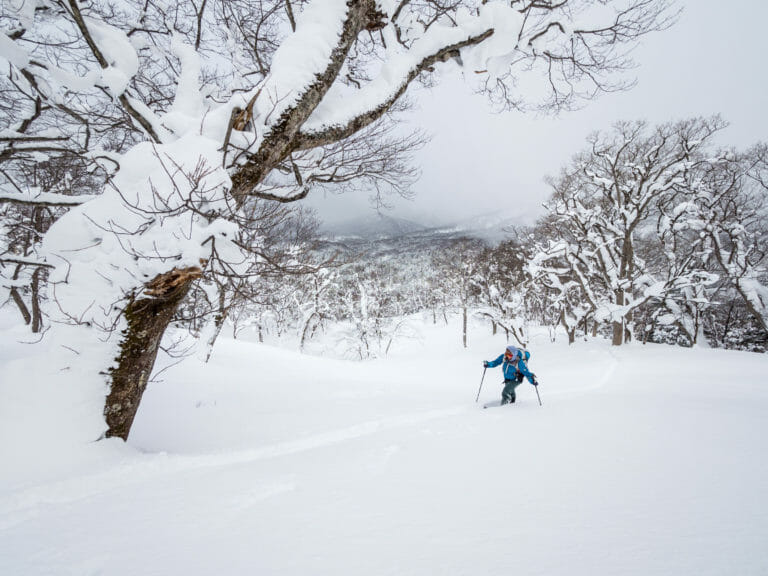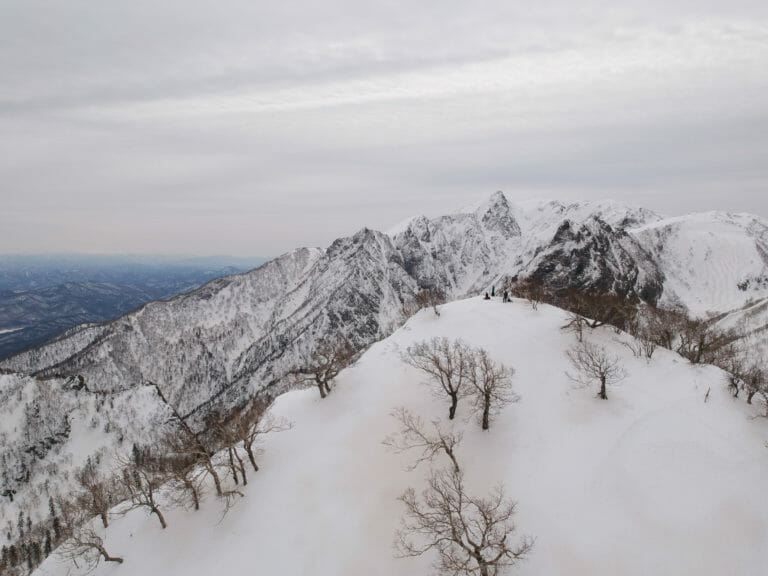“Enjoy a massive 1,100m ski descent on Mt. Shakotan which, along with Mt. Yobetsu, is a big boss of the Shakotan Peninsula. There’s a hiking trail on Mt. Shakotan, so people also climb it in summer. In mid-winter, owing to the fact that it is right next to the Japan Sea, it is an extremely difficult climb with its fierce blizzards. People generally climb Mt. Shakotan in the spring once the weather has become more stable. With gentle slopes and large open aspects higher up, it is perfect for enjoying spring skiing.” Yuki-yama Guide, 2015, p. 186
Mt. Shakotan can easily be accessed and climbed as a day-trip from Sapporo City, as I’ve done before. But, making the most of the excellent Shakotan Hut, three of us from Sapporo climbed Mt. Mekunnai on Saturday (report here), and then made the 2hr drive to the Mt. Shakotan trailhead so that we could stay at the hut and climb Mt. Shakotan on Sunday.
I had told Andy and Hiro that it would be an easy skin up an uncleared forestry road to the hut. Indeed, this is the route marked in the Yuki-yama Guide and was the route I’d done a few years back. With this in mind, I figured it would be perfectly OK to arrive at the trailhead relatively late, potentially getting to the hut after dark. Hiro had the right idea based on that information – he had prepared a sled to haul his gear up to the hut along the snow-bound road.
The reality was somewhat different, with the forestry road cleared of at least 1m of snow, right down to the gravel. It would be impossible to ski on it, so we were forced to follow a route along the west of the snaking forestry road, at times having to gingerly clamber over debris from the road-clearing.
With daylight fading fast – we had set off from the trailhead at 5:30pm – it would end up taking us about 1hr 15mins to get to the hut after abandoning Hiro’s sled soon after setting off, and taking turns carrying the now unwieldy extra luggage. It was a comfort having the GPS track, overlaid on the Japan official topographical maps using the Geographica App (iPhone | Android) on Andy’s phone, so that we at least knew we were headed in the right direction, and had a map location of the hut (other apps for displaying official Japanese topographical maps here).
It was sweet relief to arrive at the hut at almost 7pm. We quickly got the stove running (English PDF instructions here), and settled in for a relaxing remaining evening. On the menu was a Hokkaido classic – Genghis Khan.
The delightfully quiet hut allowed us to sleep in till 6am – one of the best sleeps I’ve had in a mountain hut.
After a large breakfast of crepes we left our large packs in the hut and set off towards the summit of Mt. Shakotan. Before long, we were all in our t-shirts – it was well and truly spring weather.
The upper ridge was a fickle beast, rising up to false summits and giving us peeks here and there of the scenery on the other side. The summit finally yielded and gave us expansive views over Mt. Yobetsu, the Japan Sea coast, and back towards Mt. Yotei and the Niseko Range, where we had been just a day ago.
The way down got properly interesting only once we’d clattered our way down to around 970m across sastrugi-like wind-blown snow. From there, it was glorious tree skiing on even, consistent spring snow.
Once back at the hut we packed up, signed the guestbook…And braved the tightly-treed traverse-descent along side the cleared gravel road.
Back at the cars, a group of snowboarders, some with their snowboards attached sideways on their packs, some pulling sleds full of gear and food, were just heading off. 10 minutes later, just as we were pulling away, we noticed them returning to their van…I can only imagine that they must have been re-considering their strategy for getting their gear to the hut.
Seeing as Andy is a bit of a whiskey fan, we dropped in at the Nikka whiskey distillery on the way back to Sapporo. This historic distillery has free tastings…alas Hiro and I were driving, so had to enjoy watching Andy enjoying the offerings.









